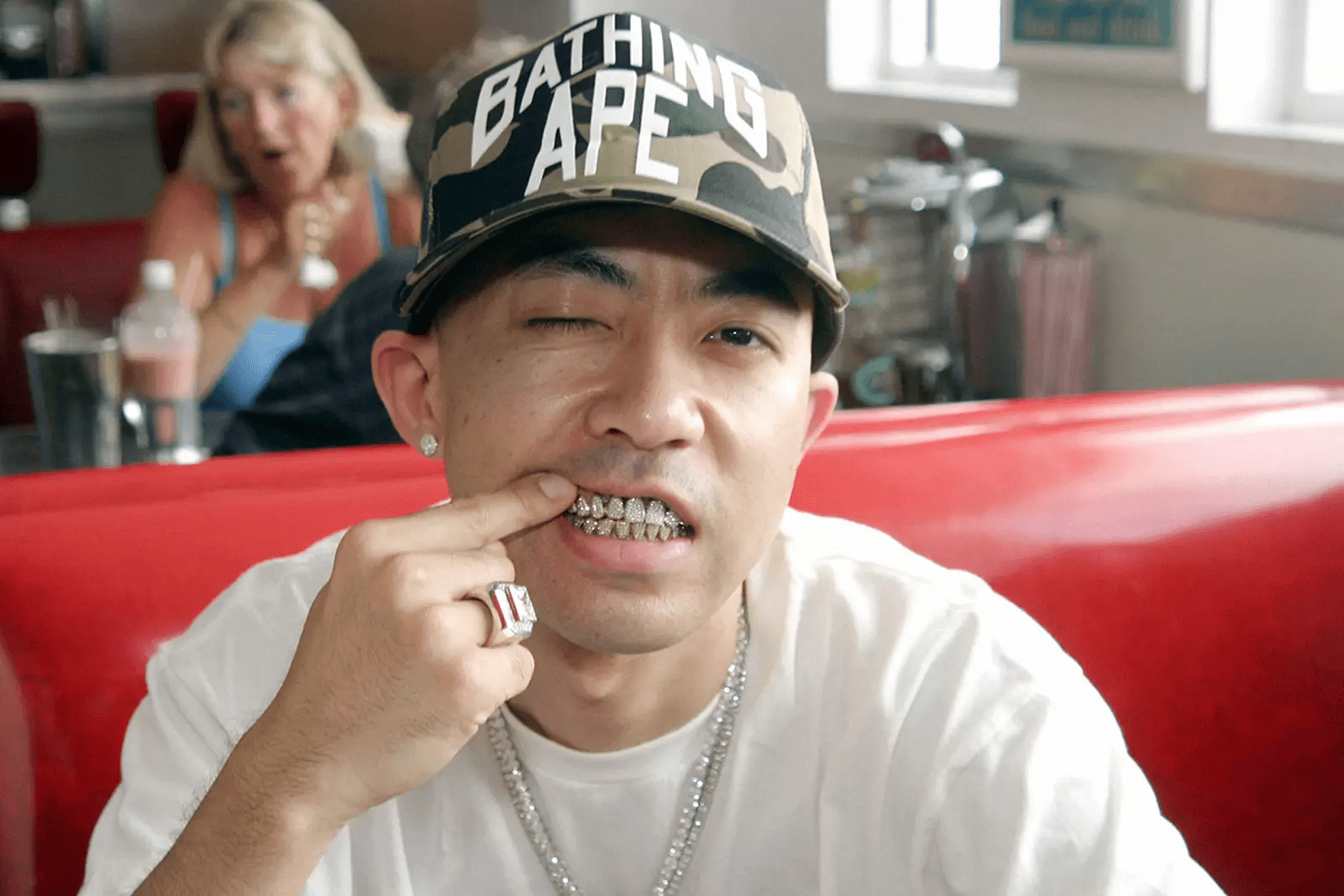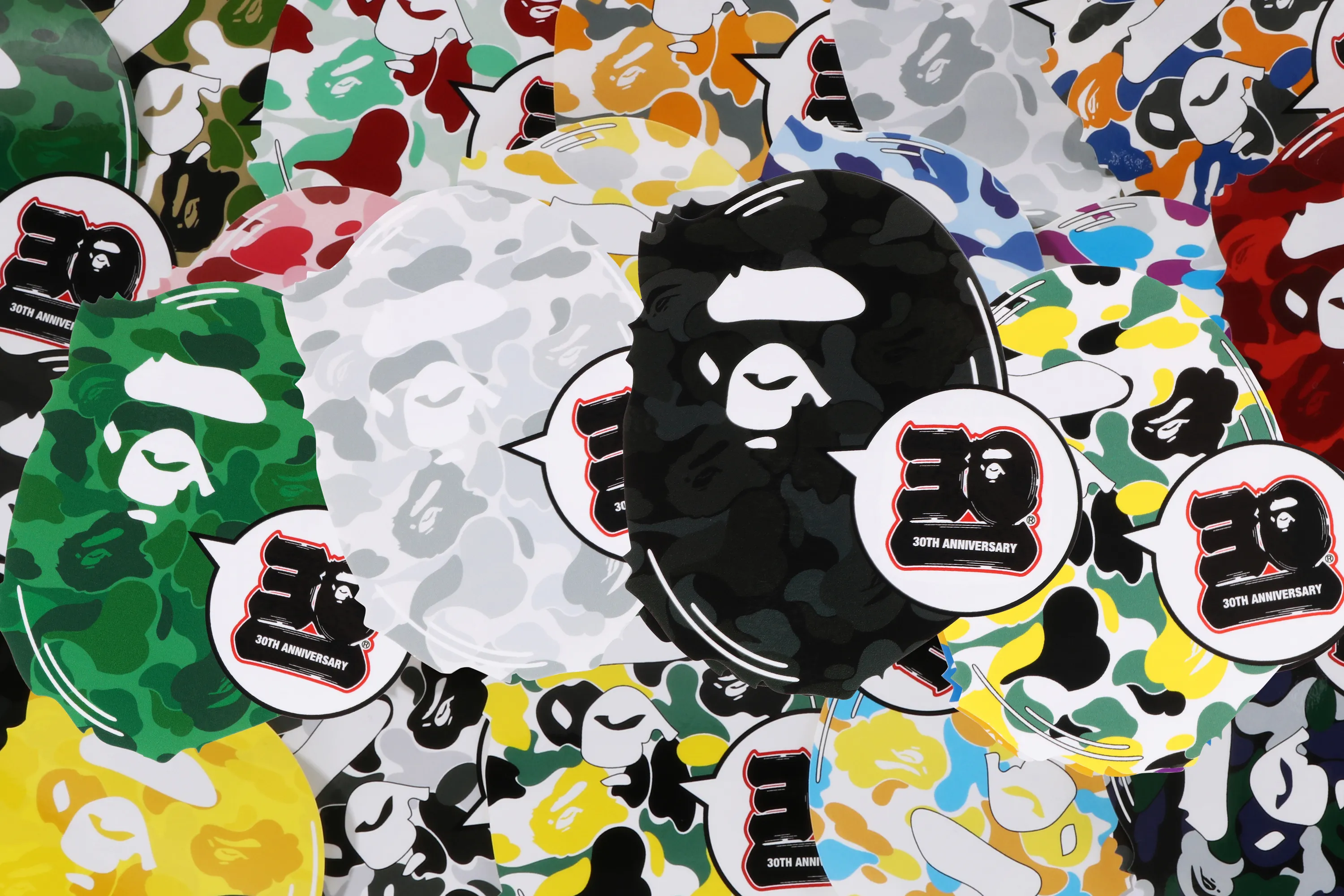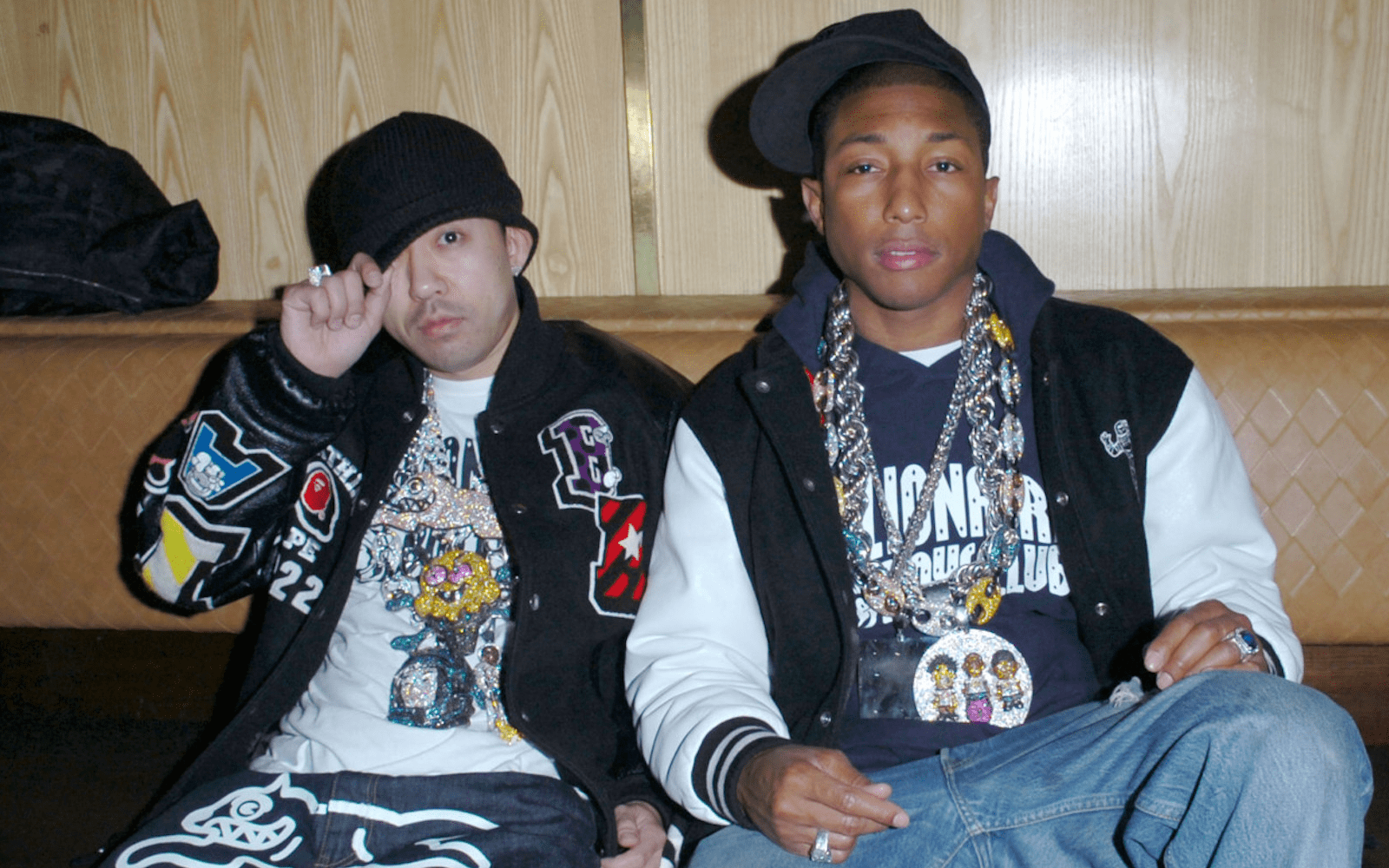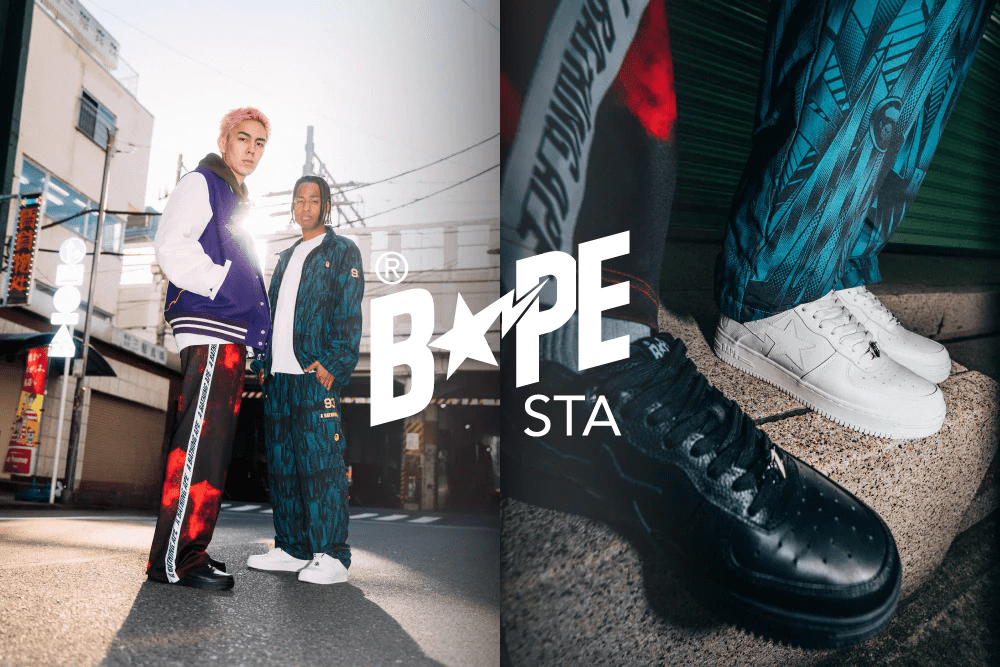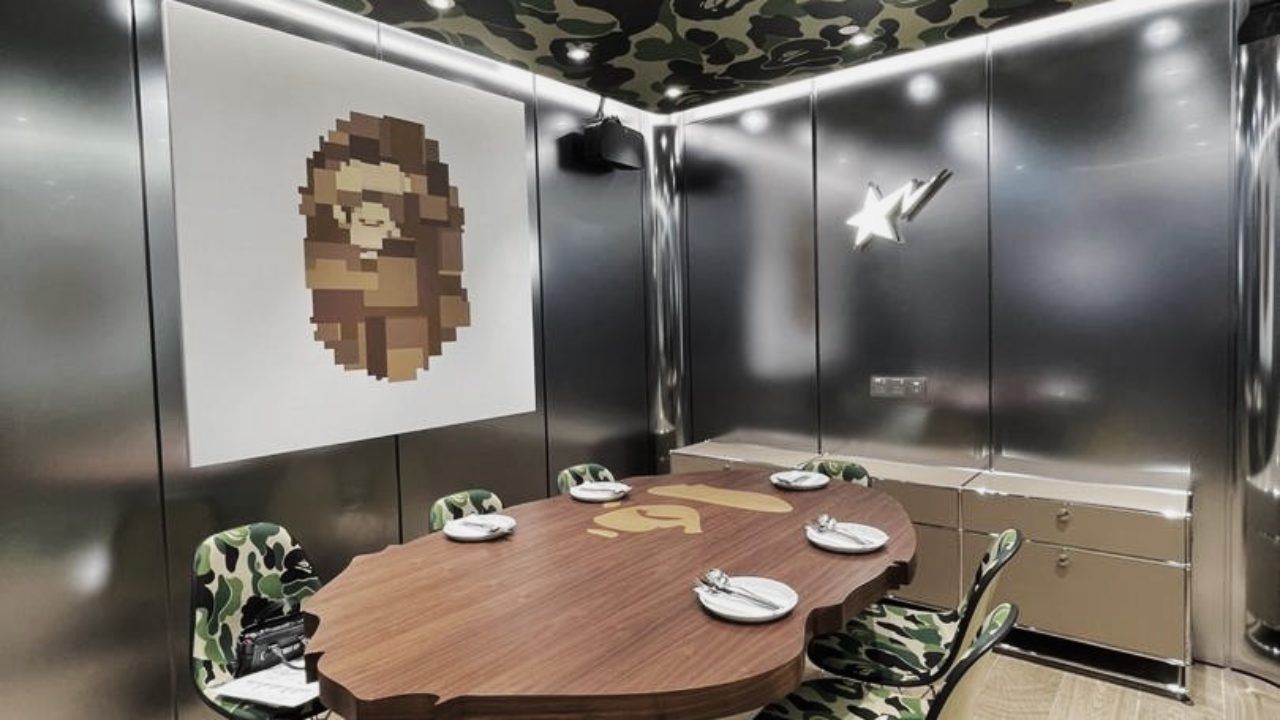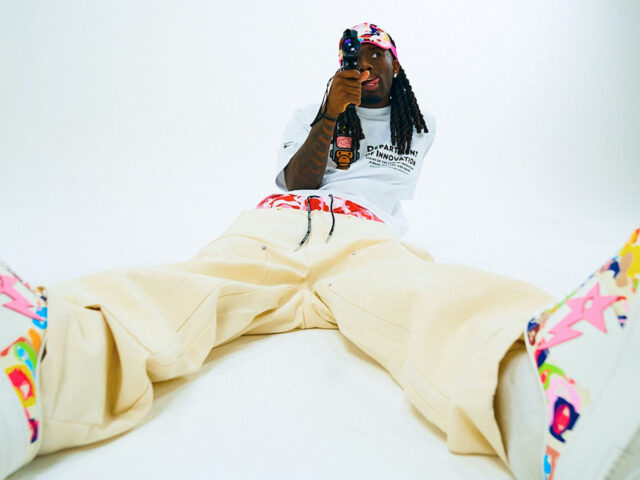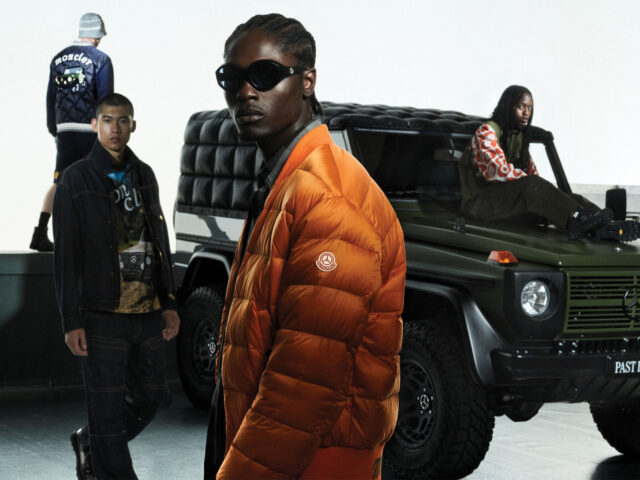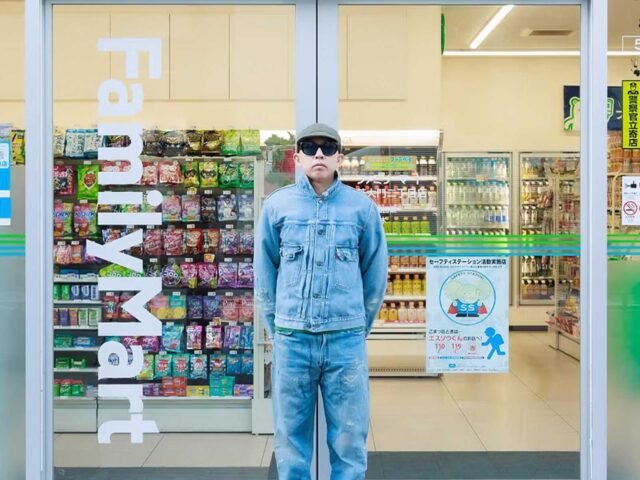Since its inception in 1993, BAPE has established itself as one of the most recognized streetwear brands in the world and certainly the most from Japan. With its iconic camouflage print, shark hoodies, cute BABY MILO and its controversial BAPEsta sneaker, the brand has been winning hearts for three decades. The brilliant mind behind it? Tomoaki Nagao, aka Nigo, the current creative director at Kenzo.
Nigo is one of those regulars in the Japanese underground scene. When he started he was almost a passive subject of Streewear culture but it was only a matter of time. After a few years working as an editor and stylist at ‘Popeye’ magazine, Nigo teamed up with his friend Jun Takahashi, of Undercover, to open the ‘NOWHERE’ store in Tokyo’s fashion district, Ura-Harajuku. The two would become close friends at Bunka Fashion College, to which Nigo attributes nothing relevant other than meeting Takahashi.
Shortly after opening the store, Nigo called Sk8thing to launch his own clothing brand, A Bathing Ape, or BAPE. The graphic designer would help him shape the elements that today have made BAPE a globally recognizable brand: the camouflage, the jumpsuit and the name.
The birth of BAPE
For the name and logo, Nigo was inspired on the one hand by its reference movie, ‘Planet of the Apes’. On the other hand, the motif is a reference to the Japanese expression “an ape bathing in warm water”. An ironic nod to the overindulgence of young streetwear consumers.
With the help of the “Godfather of Harajuku” Hiroshi Fujiwara, both Nigo and Jun Takahashi were able to push NOWHERE and its influence throughout Japan. Fujiwara was by then already a major figure in the Japanese streetwear scene. Among other things, he is credited with being one of the first hip-hop DJs in Japan. Such was the artist’s influence on the young man that he earned the nickname “Nigo”, which means Number 2 – Fujiwara’s number 2.
BAPE empire
During its early years, BAPE revolutionized the industry with its strategy, which was very new at the time. Nigo produced T-shirts in batches of 30-50, half of them he would sell and the other half he would hand out to friends. What was once born out of financial necessity would become a successful marketing strategy for BAPE. Why? Nigo’s friends were the crème de la crème of Japanese urban culture and drove the scene by their mere existence. People, upon seeing them wearing the T-shirts, would rush to ‘NOWHERE’ to try to get their hands on one of these garments. The exclusivity and desire that brands like CRTZ or Supreme (now to a lesser extent) generate today was something that BAPE mastered from the beginning. The brand was a resounding success and by the end of the 90s had already established itself as a cult brand.
With the beginning of the new century, BAPE begins its incursion into the American market. Through Jacob Arabo, the mythical jeweler of all rappers, NIGO would come into contact with Pharrell Williams. From that moment on, this unbreakable creative union would be one of the most important in history. The Japanese would help Pharrell in his Billionaires Boys Club and Ice Cream brands, while the American would support Nigo in the expansion of BAPE in America, creating a new group of stars who would wear the garments including Lil Wayne, Soulja Boy and even Notorious BIG, the first to wear the brand.
Shortly after arriving in the United States, Nigo creates the BAPE STA sneakers, an irrefutable replica of the Nike Air Force. The only difference in the model is that the famous swoosh logo is replaced by a shooting star. Well, that and the price, which was much higher than the AF1. The sports giant, which has sent constant copyright infringement notices and “cease and desist” letters to the Japanese company, finally Nike files the lawsuit later this year for plagiarism.
Decadence & Nigo’s departure
At its peak, the BAPE empire encompassed a number of business areas. In addition to retail, it had a coffee shop, an art gallery and stores dedicated to other lines such as Babymilo, a Bapy women’s couture line and a children’s clothing store. But by 2009, his fortunes were fading, and the following year the brand was out of fashion and racking up some $22.5 million in debt. Nigo stepped down as CEO of the company, selling his stake to Hong Kong fashion conglomerate I.T for a paltry $2.8 million. For the next two years, Nigo stayed on at BAPE to help with the transition, while starting other projects. Simultaneously, he would start his new brand Human Made and joined as creative director of Uniqlo’s “UT” T-shirt line.
BAPE today
BAPE has established itself as a cult brand in contemporary streetwear. Although today it is not as exclusive as it once was, nor does it pursue a strategy of scarcity, many of its archival pieces are still coveted in the market.
The Japanese brand cannot be denied that it created and pioneered strong connections between the world of music and fashion. It was also one of the first to create lifestyle products, allowing fans to lead a BAPE lifestyle. Beyond clothing and sneakers, the brand has produced everything imaginable: kitchenware, furniture, bedding, scooters, food…. Today every brand has these products, from Supreme to Louis Vuitton or Givenchy, but BAPE already did it a couple of decades ago. Even today, you can still enjoy this kind of lifestyle even in their coffee shops, but you have to be willing to take a plane for it.
Sigue toda la información de HIGHXTAR desde Facebook, Twitter o Instagram
You may also like...
